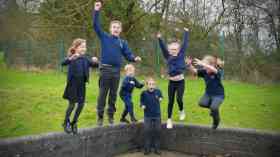With over 25 years experience in the industry, we are an independent family run business by a father-son team, specialising in
Supplier Focus
Latest Supplier News
nasen is the National Association for Special Educational Needs – a charitable membership organisation that exists to support and champion those working with, and for, children and young people with SEND and learning differences.
Join as a member for free to access resources and support and valuable CPD

 The Youth Sport Trust has revealed the findings from its PE and school sport survey, looking at the quality and provision of PE and school sport. The survey aimed to identify the varying levels of provision across the country and give schools the opportunity to assess their own performance against others locally and nationally.
The Youth Sport Trust has revealed the findings from its PE and school sport survey, looking at the quality and provision of PE and school sport. The survey aimed to identify the varying levels of provision across the country and give schools the opportunity to assess their own performance against others locally and nationally.








